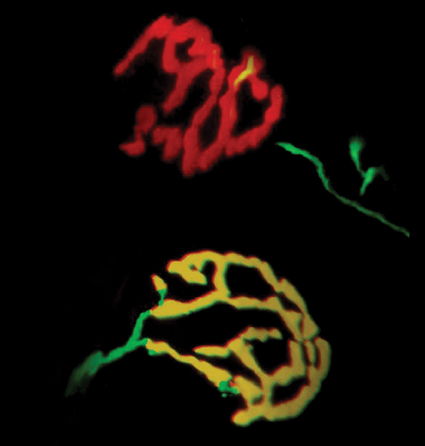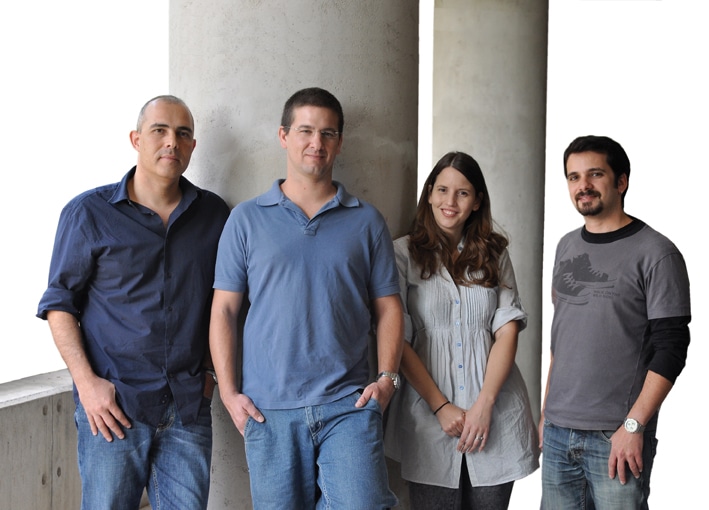The motor neurons, which control voluntary muscle movement, gradually degenerate. As a result, the patient loses the function of most muscles

ALS is one of the common diseases that cause the degeneration of nerve cells. During the disease - which usually erupts in mid-life - the motor nerve cells, which control the movement of the voluntary muscles, gradually degenerate. As a result, the patient loses the function of most of the muscles, including those responsible for swallowing and breathing. So far, not only has no cure been found for the disease, but its causes are still not fully understood.
In a study recently published in the scientific journal Proceedings of the National Academy of Sciences of the USA (PNAS), Dr. Eran Hornstein, from the Department of Molecular Genetics at the Weizmann Institute of Science, shows that deficiencies in the activity of small RNA molecules, called microRNA - No, they may explain the severe damage caused by the disease. These short RNA sequences, encoded in the genome, are part of the toolbox used to control protein production in the body. The small pieces bind to the long strands of the RNA molecules - on which the genetic instructions for building a protein are found - and prevent these instructions from being carried out.
To test the role played by microRNA in motor neurons, Dr. Hornstein from the department of molecular genetics, together with Dr. Alon Chen from the department of neurobiology at the institute, and the research students Sharon Harmati, Alik Tzafnik and Yezekel Steinberg, developed a method that allows to block in a way Selective activity in mouse neurons. These mice developed typical symptoms of motor neuron degeneration, and their lifespan was about one-third that of healthy mice. This is how the scientists received the first proof that their research is progressing in the right direction. In addition, the method they developed may become a routine research tool for producing a model of the ALS disease in mice, for further studies.

Later, the team of scientists wanted to find out which proteins in the nerve cells are affected by the loss of the microRNA. The results of their search put the spotlight on a group of proteins that play a role in the internal support of the nerve cells, including the axons - the thin and long extensions through which nerve signaling passes. These structural proteins, called neurofilaments, exist in three "sizes" - light, medium and heavy - and the orderly organization of the nerve cell is based on maintaining the correct balance between all three. "It's like building a house: if there isn't a correct ratio between bricks and cement, or between concrete and steel, the building will collapse," says Dr. Hornstein.
The scientists discovered that one of the three neurofilaments - the liver among them - is tightly and strongly controlled by a certain microRNA molecule. On the messenger RNA sequences that code for the production of this protein, nine binding sites for the microRNA called miR-9 were discovered (in the other neurofilaments only one such site was found, or not even one site was found). In the absence of miR-9 molecules - which function as a brake - excess production of the heavy neurofilaments may exceed that of the other types, which will improve the balance and damage the function of the axons. In the next phase of the research, the scientists induced a certain genetic mutation which causes a rare disease - similar to ALS - called spinal muscular atrophy. In these mice they discovered that miR-9 levels were 15 times lower than those present in normal mice.
"This is a huge difference, which may explain why the motor nerve cells of spinal muscular atrophy patients fail to maintain the structure of the neurofilaments," says Dr. Hornstein. "This means that miR-9 is almost certainly an important component in the normal activity of motor neurons."
Dr. Hornstein and the members of his group continue to follow some clues that emerged from their research. One direction is testing the question of exactly how miR-9 behaves in motor neurons. Another direction is the study of proteins that seem to make a direct connection with miR-9 in the nerve cells.
In addition, they are testing additional microRNA molecules whose levels have changed in the mutant mice. The new findings present a promising new direction for ALS disease research - as it may, in the future, reveal the comprehensive picture of the causes of the disease, and subsequently, lead to treatments based on microRNA.
More of the topic in Hayadan:

One response
Those who want to know more about the disease are welcome to order the film
Lorenzo's oil in direct view.